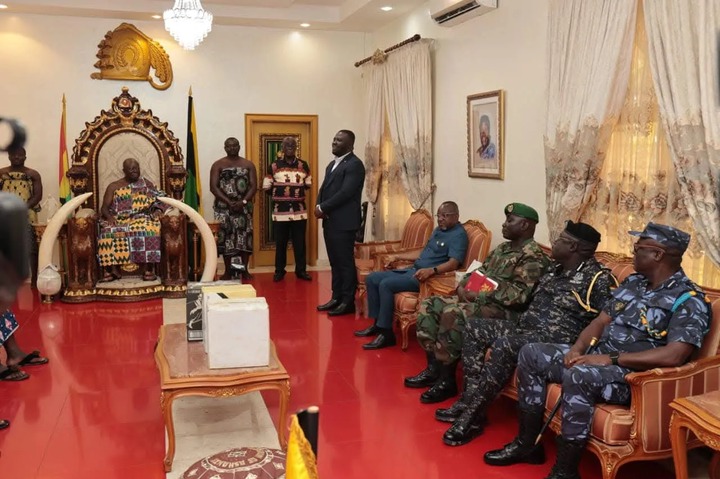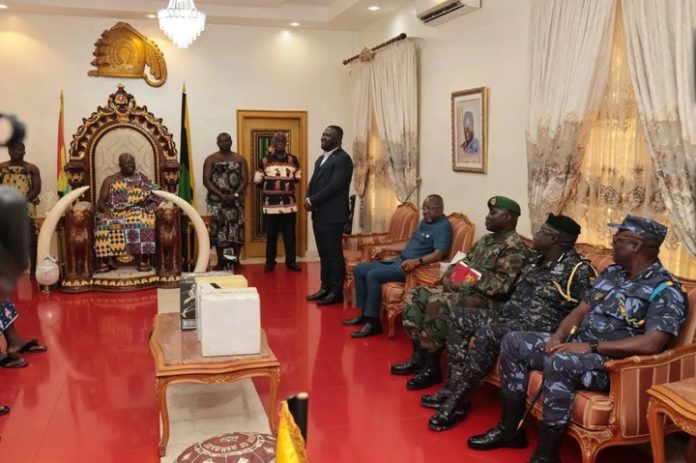
In a symbolic gesture of respect and collaboration, the newly appointed Ashanti Regional Minister, Dr. Frank Amoakohene, paid a courtesy visit to the Asantehene, Otumfuo Osei Tutu II, on Friday, 31 January.
The meeting, held at the Manhyia Palace in Kumasi, marked Dr. Amoakohene’s first official engagement since his swearing-in and underscored his commitment to working closely with traditional authorities to advance the region’s development.
Dr. Amoakohene, who was recently sworn into office, used the occasion to seek the blessings and guidance of the Asantehene, a revered figure in the Ashanti Kingdom. He expressed his determination to foster progress in the region while maintaining a strong partnership with the Asanteman Council, the traditional governing body.
“Earlier today, upon my return to the Ashanti Region, I had the honor of calling on His Royal Majesty, Otumfuo Osei Tutu II. Alongside ARECSEC members, I expressed gratitude for his support and assured him of my commitment and that of H.E. John Dramani Mahama to making the region better. Together, we move Ashanti forward! #AshantiRising,” the Minister shared in a Facebook post following the meeting.
During their discussions, Otumfuo Osei Tutu II emphasized the importance of prioritizing key areas such as infrastructure development, job creation, and security. The Asantehene also urged the new minister to uphold the values of transparency, unity, and accountability in his administration, reminding him that these principles are essential for effective governance and lasting progress.
The meeting highlighted the critical role traditional leaders play in Ghana’s development, particularly in regions like Ashanti, where the monarchy holds significant cultural and political influence. By seeking the Asantehene’s blessings, Dr. Amoakohene not only demonstrated respect for tradition but also signaled his intention to leverage the partnership between the government and traditional authorities to address the region’s challenges.
Dr. Amoakohene’s pledge to work closely with the Asanteman Council reflects a broader recognition of the need for collaborative efforts in tackling issues such as unemployment, inadequate infrastructure, and security concerns. His visit to the Manhyia Palace sets a positive tone for his tenure, suggesting a leadership style rooted in inclusivity and respect for local customs.
As the Ashanti Region looks to the future, the partnership between the new regional minister and the Asantehene offers hope for meaningful progress. However, the real test will lie in translating these commitments into tangible outcomes that improve the lives of the region’s residents. For now, the meeting at Manhyia Palace serves as a reminder of the enduring importance of tradition in shaping Ghana’s path forward.
